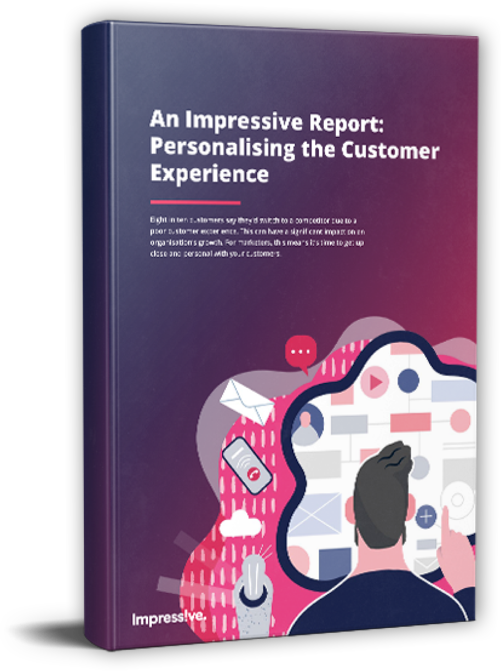COVID-19, or coronavirus, is everywhere. Social media, the news – the conversations between you and your peers. And while the majority of us are now working from home to minimise the spread, we can’t truly escape the impact it’s having.
One of those impacts has been panic buying, and the excessive overstocking of toilet paper, hand sanitiser and other essentials. While this has been great for Coles and Woolworths – with their sales currently through the roof – it doesn’t exactly spell good news for other businesses.
Restaurants, bars, cafés, gyms, cinemas – not to mention the AFL and NRL – we know a lot of these businesses will suffer and may inevitably close should Australia need to go into temporary lockdown. But what about the effects on the retail and eCommerce sector?
What happens in this space is entirely dependent on the businesses themselves, and how prepared they are for the volatile landscape we’re now faced with.
Looking Back at SARS
In 2003, over 8000 people were infected by SARS, and nearly 800 people died. This pandemic also started in China, with the country ultimately going into lockdown, turning their bustlings cities into ghost towns.
The number of patients affected by SARS and its impact on the global community has been surveyed in considerable detail over the past 17 years. While the direct impact on medical expenditure appears to be small in comparison to other major epidemics such as HIV/AIDS or malaria, there was a much larger impact on industries such as tourism and retail.2
However, it was more than simply cancelled tourist trips and declines in retail spending. There were also connections – or disconnections – between sectors and across international economies, with the impacts going beyond simply disease-inflicted countries. As the world becomes more integrated, the global cost of communicable diseases like SARS or COVID-19 can only be expected to rise.
Further to this, the temporary shock to the global economy during the SARS pandemic had its largest impact on China and Hong Kong. The 2.63% loss of GPD, however, is much larger than the 1.05% loss for mainland China.2 This primarily reflects the larger share of impacted industries in Hong Kong, as well as the greater reliance on trade within the region.
So, how did mainland China recover? In 2003 eCommerce was only just starting to emerge in the country, with access to the internet still relatively limited. But during the SARS outbreak, there were two online companies that managed to stay afloat – and pave the way for the future of eCommerce within China.
JD.com
JD.com was a chain of small electronics shops that launched an eCommerce site. At the time Richard Liu’s business had 12 bricks-and-mortar stores in Beijing. Originally, his plan was to expand to more than 500 stores – but during the SARS outbreak business plummeted and he had to close all but one in order to conserve funds.3
A resourceful business owner, however, he did what he could to keep business going, resorting to posting in QQ groups (groups that used the QQ instant messaging service from Chinese gaming company Tencent – similar to Facebook groups) and college bulletin forums. Where possible, employees would also personally deliver orders to customers who lived close to the office to reduce the overheads on utilising courier services.
JD.com is now no.1 in the Digital Commerce 360 Asia 4504, and with tenacious leadership and out-of-the-box thinking despite adverse circumstances, it’s little wonder why.
Alibaba
In 2003, Alibaba was a 4-year old B2B eCommerce company, with their business model focused on matching procurement teams with Chinese suppliers. During the SARS outbreak, Alibaba’s 500+ employees were quarantined at home for 12 days – but this didn’t slow their business down.
If anything, SARS only sped things up. Many countries around the world issued travel warnings for business people travelling to China, and thus many turned to Alibaba to source Chinese goods. Their eCommerce business added 4000 new members and 9000 listings each day, a 3-5x increase from their pre-SARS rate.5
Chinese suppliers also invested more in online marketing on Alibaba’s platform, growing the company by 50% that year – and generating daily revenues of 10 million RMB (or $2.3 million AUD). Over half of the 1.4 million suppliers on the platform also saw strong sales growth.
What Does the Future of COVID-19 Hold?
Armed with the knowledge of SARS, what can we expect from COVID-19?
The examples of Alibaba and JD.com show us that opportunities can be found in times of crisis. What is different about today is that China’s eCommerce infrastructure is far more established and robust compared to 17 years ago.
The same can be said for Australia. Our eCommerce industry is well-established, and online sellers of essential fast-moving consumer goods (FMCG), such as toilet paper, tissues, soap and hand sanitiser have already seen a surge in demand as more people stay at home and stock up.
But what about other verticals within the eCommerce and retail sector? The search term womens shoes has dropped by over 30% since mid February, compared to last year where it increased by 22% – and this is only one example.
Interestingly, a recent study suggests that men are actually more likely to cut back on spending than women during this period. While 71% of women reported being worried about coronavirus compared to only 60% of men, nearly half of men said it had impacted their purchase decisions, versus only 41% of women.6
Anticipated Consumer Behaviour During COVID-19 Stages
While it may be too early to tell the full impact of COVID-19, we can take advantage of the data available to us to analyse and ultimately anticipate consumer behaviour. By doing this, businesses are more likely to penetrate a difficult market and stay afloat through every stage of the pandemic.
Stage 1: Infection not widespread
- Governments advise the public not to panic
- Only light restrictions are in place, in a bid to keep the economy going
- The public starts hoarding pantry and self-care goods, such as toilet paper, hand sanitiser and tinned foods
- Online shopping behaviour increases, possibly due to an influx of first-timers or non-regulars. Key niches include:
- Groceries
- Fast-moving consumer goods
- Health and wellness
- Family care
We’ve seen this in action, with Rapid G’s month-on-month (MoM) sales increasing by 1412%; the majority of which have come from new customers.
Stage 2: Initial strain on medical system
- Governments increase social distancing rules:
- Mass gatherings banned
- Events cancelled
- Schools, malls, restaurants, gyms forced to shut or decrease business output
- Wages and jobs affected:
- Travel
- Hospitality
- Live entertainment
- Casual workers and contractors
- Luxury spending decreases in the following niches:
- Fashion
- Accessories
- Gifts
- Travel and other products
- Medical system experiences initial strain
- Increase in use of social media and in-home entertainment
It’s likely businesses will see a higher engagement with online advertising, particularly on social media platforms – but this may not necessarily result in a proportionate increase in sales.
Stage 3: Lockdown & border restrictions
- Consumer spending comes to a halt outside of essential goods and services
- Medical system comes under maximum strain
- Consumers start missing luxuries (intensity of this depends on the length of lockdown)
- Entertainment (cinema, social gatherings, events)
- Travel
- Retail shopping
- Social media and in-home entertainment at an all-time high as consumers occupy themselves during quarantine
In this period, eCommerce will likely be the only shopping activity to remain (apart from supermarkets and pharmacies). It’s here that businesses will have to razor-target their audiences, as the sales activity will largely differ niche-to-niche and demographic-to-demographic.
Stage 4: First signs of infection slowdown
- Social distancing rules begin to relax
- Essentials first – schools, offices, etc
- Followed by retail, entertainment and hospitality
- Consumers begin spending, focusing primarily on in-person experiences, such as restaurants, cinemas and other events
- Discretionary spending starts to trickle back in
During this period, eCommerce businesses should consider discounts and sales promotions. Where possible, they could also sponsor public events to showcase their involvement in the community. Retail businesses could host public events within stores to encourage foot traffic once more.
Stage 5: Infections dwindle at a greater rate
- Consumer confidence rises, but with greater awareness of self-care and fitness
- Consumer spending gradually trends towards equilibrium
By this stage, consumers will have a greater awareness of eCommerce and the benefits of the industry. Customers who were previously resistant to waiting for items to be posted will be more comfortable with the idea. This could ultimately lead to a larger market for brands.
What Can eCommerce Businesses Do to Stay Ahead of the Curve?
While the end of COVID-19 will spell good news for businesses of all shapes and sizes – we have to make it there first. At present, there’s no telling how long each stage could take. It’s likely the strain on the Australian economy will mean some businesses won’t make it to the end. It’s important to be vigilant and to develop a strategy that is sustainable and works for your business.
Consider how you can amend and update key initiatives you currently have in progress. Are there any priorities that need to be extended or delayed? You can also consider the following:
Offensive strategy
- Watch the market shifts. Consider how you can respond.
- Follow the changes in online behaviour. If Australians are spending more time on Facebook or another platform, how can you ensure your products are in front of the right demographics?
- Review your products. Which would be the most valuable to your customers right now? How can you change them or market them to meet your audience’s new needs?
- Corporate social responsibility: Who can you help, and how? While this may not come with financial gain, if you’re in a position to do so, it builds a strong reputation for your brand and supports the community.
Defensive strategy
- Evaluate your costs. What can you eliminate in order to conserve your resources?
- Review your supply chain. Where is your largest point of risk and what are your alternatives?
- Consider your partners, suppliers and customers. How is this affecting them? Can you support them – or can they support you?
Stay in Front with Impressive
We’re just like every other business during this period. We’re doing what we can to stay ahead of the curve and maintain our business. But with a team of strategists and channel specialists who understand – and excel – at staying visible in difficult markets, we’re confident we can support your eCommerce growth through this time. Don’t just stay afloat – come out on top. Speak to an Impressive digital strategist today for an obligation-free planning session.
SOURCES:
- https://www.ncbi.nlm.nih.gov/books/NBK92473/
- https://mp.weixin.qq.com/s/BiY5SB6_VZ1-U_7Q-iaklQ
- https://www.digitalcommerce360.com/product/asia-500-database/?utm_source=Web&utm_campaign=2018-Article&cmp=1&utm_medium=Article
- https://mp.weixin.qq.com/s/rxeeuy2-xuV6OBxcn6SkYA
- https://www.forbes.com/sites/gregpetro/2020/03/13/coronavirus-and-shopping-behavior-men-and-women-react-differently/#3d59a5014737















